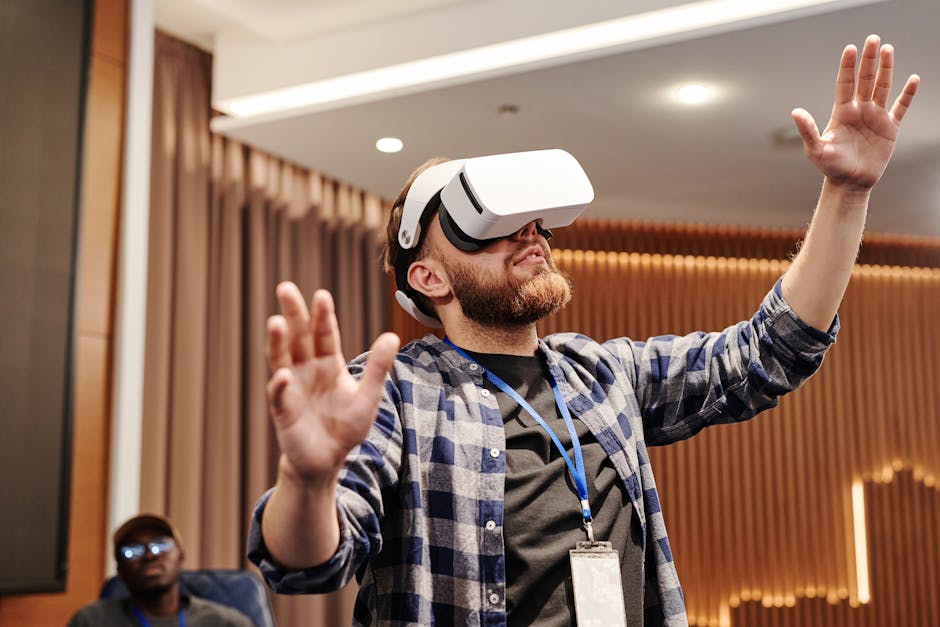Create A Lasting User Experience With ‘Functional MVPs’
Are you tyred of investing time and resources into product development, only to find that your users are not satisfied? It’s frustrating when your hard work goes unnoticed or fails to meet the expectations of your target audience. But fear not, there is a solution that can transform your user experience and leave a lasting impression on your customers.
Enter ‘Functional MVPs’ – the secret weapon to creating an exceptional user experience. By utilising this innovative approach, you can strike the perfect balance between functionality and value, ensuring that every feature in your product serves a purpose and delights your users.
In this article, we will guide you through the process of identifying core functionalities, prioritising features for maximum user value, testing and gathering valuable feedback, and ultimately making informed decisions to enhance the overall user experience.
So get ready to wow your users with functional MVPs that will keep them coming back for more!
Key Takeaways
- Functional MVPs are essential for creating a lasting user experience.
- User research and testing are crucial for identifying areas of improvement and making data-driven decisions.
- User feedback guides decision-making and enhances the user experience.
- Iterative development based on user feedback improves the product and meets user needs.
Understanding the Concept of Functional MVPs

Imagine building a product that captures the essence of its functionality in its simplest form, like a newborn chick breaking free from its shell. This is the concept behind functional Minimum Viable Products (MVPs).
These MVPs are prototypes that allow you to test your ideas and gather feedback from users in an iterative development process.
Building prototypes is an essential step in creating a lasting user experience. It allows you to quickly validate your assumptions and make improvements based on user feedback. By starting with a functional MVP, you can focus on the core functionalities of your product and avoid getting caught up in unnecessary features or design elements.
The beauty of functional MVPs lies in their simplicity. They strip away all the bells and whistles, leaving only the bare essentials that solve your users’ problems. This approach not only saves time and resources but also ensures that your product delivers value from day one.
Iterative development is another key aspect of creating a lasting user experience with functional MVPs. Instead of spending months or even years perfecting every detail before launching, you can release an initial version of your product and then continuously improve it based on user feedback. This agile approach allows you to adapt to changing needs and preferences, ensuring that your product remains relevant over time.
By identifying core functionalities for your product early on, you can create a solid foundation for future iterations. This will enable you to build upon what works well while discarding what doesn’t, resulting in a refined and polished user experience.
So, as you embark on this journey of creating functional MVPs, remember to keep it simple yet impactful – just like a newborn chick taking its first steps towards growth and success.
Identifying Core Functionalities for Your Product

Picture yourself in the driver’s seat of a high-performance car, navigating through a series of winding roads, as you determine the essential functionalities that will propel your product forward.
As you embark on this journey of identifying core functionalities for your product, there are two key factors to consider: determining essential features and optimising user experience.
Firstly, determining essential features is crucial to the success of your product. Think about what functionalities are absolutely necessary for users to achieve their desired outcomes. These could include basic actions such as sign-up and login processes, as well as more complex features like search functionality and data storage capabilities. By prioritising these core functionalities, you ensure that your product meets the fundamental needs of your users.
Secondly, optimising user experience should be at the forefront of your mind when identifying core functionalities. Put yourself in the shoes of your target audience and think about what would make their interaction with your product seamless and enjoyable. Consider factors such as ease of navigation, intuitive design elements, and responsive feedback systems. By incorporating these elements into your core functionalities, you create a lasting user experience that keeps users coming back for more.
Determining essential features and optimising user experience are crucial steps in creating a lasting user experience with functional MVPs. By understanding what functionalities are necessary for success and how to enhance user satisfaction, you set yourself up for product excellence.
In the next section about ‘prioritising features for user value,’ we will delve deeper into how to make strategic decisions in this process without overwhelming yourself or your team.
Prioritising Features for User Value

As you navigate through the process of prioritising features for user value, envision yourself in the driver’s seat of a high-performance car, carefully selecting the functionalities that’ll propel your product towards success. User-centric design is at the heart of creating a lasting user experience with functional minimum viable products (MVPs).
To ensure that your product meets the needs and desires of your users, it’s crucial to conduct thorough user research. By understanding their pain points, preferences, and expectations, you can prioritise features that’ll provide maximum value.
The importance of user research can’t be overstated when it comes to prioritising features. It allows you to gain insights into what your target audience truly wants and needs from your product. Through methods such as interviews, surveys, and useability testing, you can collect valuable feedback that’ll guide your decision-making process.
When prioritising features for user value, keep in mind that not all functionalities are created equal. Some may be nice-to-have but not essential for delivering a great user experience. Focus on identifying core functionalities that directly address the pain points of your users and provide them with solutions they seek.
By incorporating these key features into your MVP, you can create an initial version of your product that resonates with users and delivers real value. This approach also allows for iterative development based on ongoing feedback from users.
Transitioning into testing and gathering user feedback is crucial to refining and improving upon the initial set of functionalities.
Testing and Gathering User Feedback

Get ready to embark on an exhilarating journey of discovering your users’ needs and desires through testing and gathering their valuable feedback. User testing is a crucial step in the process of creating a lasting user experience with functional MVPs.
By putting your product in the hands of real users, you can gain insights into how they interact with it, what features resonate with them, and what areas need improvement.
User testing allows you to observe firsthand how users navigate through your MVP and identify any pain points or areas of confusion. This feedback analysis provides invaluable information that can guide your decision-making process moving forward. It helps you understand what aspects of your product are working well and which ones need refinement.
During user testing sessions, make sure to create a comfortable environment where participants feel at ease sharing their thoughts openly. Encourage them to voice their opinions, ask questions, and provide suggestions for improvement. Remember that the goal is not just about finding flaws but also uncovering opportunities for enhancement.
After conducting user testing, carefully analyse the feedback gathered. Look for patterns or recurring themes that emerge across different participants’ experiences. These insights will help you prioritise the most critical features or changes that need to be made for enhancing the overall user experience.
Now armed with valuable user feedback and insights from testing, you can confidently move forward in making informed decisions for user experience enhancement without missing a beat.
Making Informed Decisions for User Experience Enhancement

By analysing user feedback and insights from testing, you can confidently make informed decisions for enhancing the overall user experience, leading to a significant increase in customer satisfaction and loyalty.
One interesting statistic to visualise this is that companies that prioritise user experience see a 10% higher conversion rate compared to those who don’t.
User-centric design strategies play a crucial role in creating a lasting user experience. By placing the needs and desires of your users at the forefront of your decision-making process, you ensure that every aspect of your product or service resonates with them on a deep level.
This requires conducting thorough user research to gain valuable insights into their preferences, pain points, and expectations. Understanding these factors allows you to tailor your offering specifically to meet their needs, resulting in an exceptional user experience.
Importance of user research cannot be overstated when it comes to making informed decisions for enhancing the overall user experience. Through various techniques such as surveys, interviews, and useability testing, you gain invaluable insights into how users interact with your product or service.
These insights allow you to identify areas for improvement and make data-driven decisions regarding feature prioritisation, interface design enhancements, and overall useability refinements.
By implementing functional MVPs based on these informed decisions for enhanced user experience, you create a solid foundation for lasting satisfaction. Functional MVPs are minimal viable products that offer core functionality while still providing an enjoyable and seamless user experience.
They allow you to validate assumptions made during the design phase by observing real-world usage patterns and collecting feedback from actual users.
Transition: Now that we have explored the importance of making informed decisions based on user research, let’s delve into how implementing functional MVPs can further enhance lasting user satisfaction.
Implementing Functional MVPs for Lasting User Satisfaction

To achieve lasting satisfaction for your users, implementing functional MVPs ensures a seamless and enjoyable product experience that validates assumptions made during the design phase. By adopting an iterative development approach, you can continuously improve your product based on real user feedback, making it more engaging and valuable.
Implementing functional MVPs allows you to measure user engagement effectively. Through the use of analytics tools and user testing, you can gather valuable insights into how users interact with your product. This data helps you identify areas for improvement and make informed decisions about future enhancements.
One effective way to measure user engagement is through the use of a 2 column and 4-row table:
| Engagement Metrics | Description |
|---|---|
| Time Spent on Product | Measures how much time users spend actively using your product. Longer durations indicate higher engagement levels. |
| Number of Interactions | Counts the number of interactions users have with different features or elements within your product. Higher numbers suggest greater interest in exploring all aspects of your offering. |
| Conversion Rate | Tracks the percentage of visitors who complete a desired action such as signing up or making a purchase. Higher conversion rates indicate successful user engagement strategies. |
| Retention Rate | Measures how many users continue to use your product over time. A high retention rate indicates that users find value in what you offer. |
By regularly monitoring these metrics, you can gain insights into how well your MVP is performing and identify opportunities for improvement. This iterative approach not only enhances user satisfaction but also enables you to create a delightful and impactful product that meets their needs.
Implementing functional MVPs allows for continuous improvement by measuring user engagement through various metrics like time spent on the product, number of interactions, conversion rate, and retention rate. By leveraging these insights, you can create a lasting user experience that exceeds expectations and keeps users coming back for more.
Frequently Asked Questions
Can a functional MVP be developed for any type of product or service?
Yes, a functional MVP can be developed for any product or service. It’s like giving someone a taste of your masterpiece before it’s complete. While there are limitations, the benefits of a functional MVP are immense.
How can I determine the core functionalities for my product?
To determine the core functionalities for your product, start by understanding what will truly satisfy your users. Measure their satisfaction by gathering feedback and analysing user behaviour to identify the essential features that will create a successful user experience.
What are some common factors to consider when prioritising features for user value?
When prioritising features for user value, consider factors such as customer feedback, market demand, and alinement with the product’s core purpose. This ensures a meaningful and satisfying experience for users.
Are there any specific techniques or tools recommended for testing and gathering user feedback?
To gather user feedback and ensure useability, try conducting useability testing sessions where users can interact with your product and provide insights. Additionally, use user surveys to gather feedback on their experience and preferences.
How can I ensure that the implementation of a functional MVP will lead to lasting user satisfaction?
To ensure lasting user satisfaction with the implementation of a functional MVP, focus on effective implementation strategies. Continuously gather and incorporate user feedback, prioritise their needs, and iterate on the product accordingly.
Conclusion
As you embark on the journey of creating a lasting user experience, remember that Functional MVPs are your guiding light. Just like a compass guides a lost traveller, these prototypes will steer you in the right direction.
With careful consideration and prioritisation of features, you can create a product that resonates with users on a deep level. By testing and gathering feedback, you can fine-tune your creation to perfection.
So go forth, armed with Functional MVPs, and create an unforgettable user experience that leaves a lasting mark in their hearts.
Contact us to discuss our services now!
